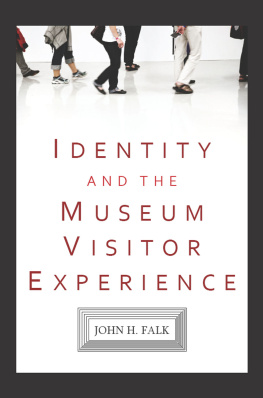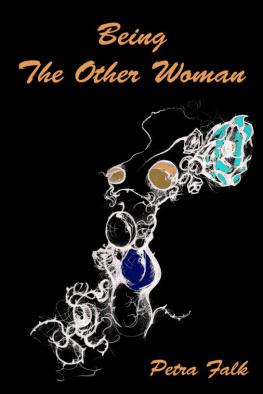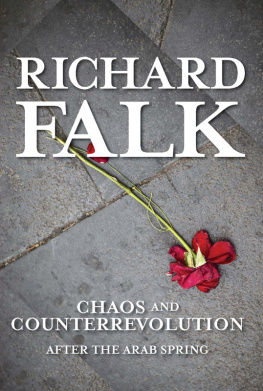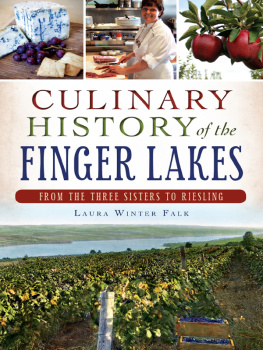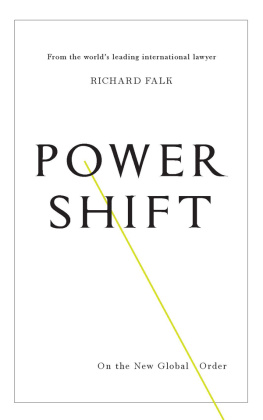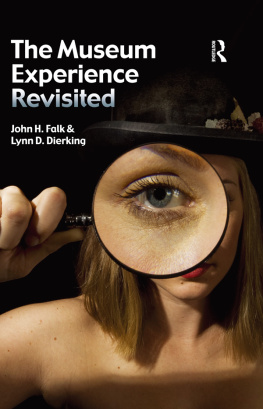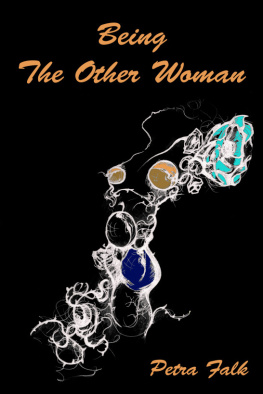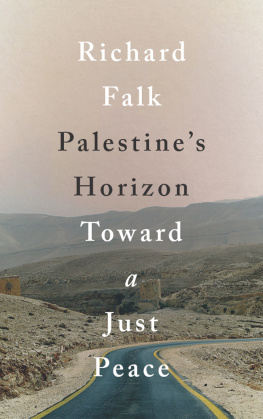Falk - Identity and the Museum Visitor Experience
Here you can read online Falk - Identity and the Museum Visitor Experience full text of the book (entire story) in english for free. Download pdf and epub, get meaning, cover and reviews about this ebook. City: London etc, year: 2016, publisher: Taylor and Francis;Routledge, genre: Religion. Description of the work, (preface) as well as reviews are available. Best literature library LitArk.com created for fans of good reading and offers a wide selection of genres:
Romance novel
Science fiction
Adventure
Detective
Science
History
Home and family
Prose
Art
Politics
Computer
Non-fiction
Religion
Business
Children
Humor
Choose a favorite category and find really read worthwhile books. Enjoy immersion in the world of imagination, feel the emotions of the characters or learn something new for yourself, make an fascinating discovery.
- Book:Identity and the Museum Visitor Experience
- Author:
- Publisher:Taylor and Francis;Routledge
- Genre:
- Year:2016
- City:London etc
- Rating:4 / 5
- Favourites:Add to favourites
- Your mark:
- 80
- 1
- 2
- 3
- 4
- 5
Identity and the Museum Visitor Experience: summary, description and annotation
We offer to read an annotation, description, summary or preface (depends on what the author of the book "Identity and the Museum Visitor Experience" wrote himself). If you haven't found the necessary information about the book — write in the comments, we will try to find it.
Falk: author's other books
Who wrote Identity and the Museum Visitor Experience? Find out the surname, the name of the author of the book and a list of all author's works by series.
Identity and the Museum Visitor Experience — read online for free the complete book (whole text) full work
Below is the text of the book, divided by pages. System saving the place of the last page read, allows you to conveniently read the book "Identity and the Museum Visitor Experience" online for free, without having to search again every time where you left off. Put a bookmark, and you can go to the page where you finished reading at any time.
Font size:
Interval:
Bookmark:

Identity and the Museum Visitor Experience

Identity and the Museum Visitor Experience

John H. Falk

First published 2009 by Left Coast Press, Inc.
Published 2016 by Routledge
2 Park Square, Milton Park, Abingdon, Oxon OX14 4RN
711 Third Avenue, New York, NY 10017, USA
Routledge is an imprint of the Taylor & Francis Group, an informa business
Copyright 2009 Taylor & Francis
All rights reserved. No part of this book may be reprinted or reproduced or utilised in any form or by any electronic, mechanical, or other means, now known or hereafter invented, including photocopying and recording, or in any information storage or retrieval system, without permission in writing from the publishers.
Notice:
Product or corporate names may be trademarks or registered trademarks, and are used only for identification and explanation without intent to infringe.
Library of Congress Cataloguing-in-Publication Data
Falk, John H. (John Howard), 1948
Identity and the museum visitor experience / John H. Falk.
p. cm.
Includes bibliographical references and index.
ISBN 978-1-59874-162-9 (hardback : alk. paper) -
ISBN 978-1-59874-163-6 (pbk. : alk. paper)
1. Museums--Educational aspects. 2. Museum visitors. 3. Museum exhibits. 4. Identity (Philosophical concept)
I. Title.
AM7.F33 2009
069.15--dc22
2009013470
ISBN 978-1-59874-162-9 hardcover
ISBN 978-1-59874-163-6 paperback
For Lynn
CONTENTS


The real voyage of discovery consists not in seeking new landscapes but in having new eyes.
Marcel Proust
T he impetus for this book actually goes back to the early years of my career in the 1970s when I believed that it should be possible to develop an empirically based model of the museum visitor experience. For more than thirty years, I have been working towards that goal, trying to understand why people go to museums, what they do once inside the museum, and finally, what meanings people make from their museum visitor experiences. In many ways, this book represents the product of all these many years of research and thinking. Although the model I propose in this book falls just short of that dream of a fully empirical model, it comes close.
As described first in The Museum Experiencevisit. An individuals identity-related needs motivate him or her to visit a museum and provide an overarching framework for that visit experience. However, the social and physical realities an individual encounters while in the museum are not insignificant. Although identity-related needs and interests primarily direct the individuals museum visit experiences, the museum itself is not passive. The realities of the museum also play a role in bending and shaping the individuals museum visit experience. But once away from the museum, the individuals identity-related needs once again hold sway, forming a prism through which all experiences are viewed. The challenge was how to weave all these threads together into a single theoretically consistent and empirically supportable model.
In writing this book I have tried to bring together several major strands of knowledge, in particular, my deep understanding of museum visitor studies and a comprehensive awareness of research in the leisure sciences. I have also brought to bear my understanding of psychology, neurobiology, and marketing research. I have tried to intertwine these basic strands into a single, unified model that attempts to describe as well as predict the visitor experience. It is a model that takes into consideration how long-term memories and meanings are constructed from a visit to a museum. It is a model that postulates that a museum visit itself is strongly shaped by the expectations an individual develops prior to a visit, based upon his or her own identity-related need, as well as by the expectations and views of the larger socio-cultural context. It is a model that describes how the individuals larger socio-cultural context is, in a very real way, strongly shaped by the collective personal experiences of every person who has ever visited a museum, including the individual. Although I present the model linearly, as the medium of a book dictates, beginning with the large-scale context of twenty-first century leisure and concluding at the level of personal memories, its important to keep in mind that the model could just as easily be run in reverse, starting from a persons memories. And of course, each link in the model has numerous feedback loops to each of the other links.
My goal in writing this book, more than anything, is to help change the quality of how museums understand and support the publics museum visitor experiences. I sincerely believe that this model has the potential to permit museums to proactively manage the museum visitor experience in new and ultimately, better ways. Specifically, the model I propose encourages museums to approach interacting with visitors in more customized and tightly tailored ways to meet the specific needs of individual visitors; it is not about types of visitors, but the types of visitor needs. Basing practice on this new model would also require profound changes in current museum practicedeveloping exhibits and programs designed to accommodate multiple outcomes and visitor goals. Finally, I believe that using the model would also dramatically change how museums define and measure their impact; bringing institutional missions, practices, and assessments more in-line with the actual public values and outcomes. I appreciate that these are bold assertions. Ultimately, each reader will need to decide if they accept either the model or my assertions of its implications.
Although the model I propose is primarily based upon research that I have conducted in the U.S., results from other countries, in particular the U.K., Canada, Australia, and Colombia support my conclusions. Whenever possible, I have included data from other countries though its clear that my primary data comes from the U.S. Despite this regional bias, I think the basic framework of my model is likely to be robust in other cultural contexts. That said, it remains for others to determine if the specific motivational categories of visitor I have defined are the same in other countries and situations. Also, despite making the case that the variables of gender, race/ethnicity, social class, and even age provide relatively little explanatory power, I do not want to suggest that these variables have no influence on the visitor experience. They would almost certainly be important in museums that focus specifically on identity-related issues of race/ethnicity, gender, or nationality (for example, the numerous race/ethnicity museums such as the many African American museums and the Japanese American National Museum; gender-focused museums such as the Womens Museum; nationality and ethnicity focused museums such as the American History Museum and the National Museum of Australia or Te Papa). That said, I do not explicitly deal with these variables or these types of museums in this book.
Next pageFont size:
Interval:
Bookmark:
Similar books «Identity and the Museum Visitor Experience»
Look at similar books to Identity and the Museum Visitor Experience. We have selected literature similar in name and meaning in the hope of providing readers with more options to find new, interesting, not yet read works.
Discussion, reviews of the book Identity and the Museum Visitor Experience and just readers' own opinions. Leave your comments, write what you think about the work, its meaning or the main characters. Specify what exactly you liked and what you didn't like, and why you think so.

